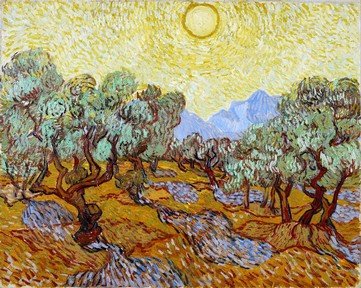Quiz Answer Key and Fun Facts
1. This lovely carving of a dove comes from the island of Cyprus - in ancient times the centre of the cult of which major Greek goddess, to whom doves were sacred?
2. Depicting a group of doves drinking from a golden bowl, this stunning Roman mosaic was found in the sumptuous villa of which Roman emperor, who built something durable in Great Britain?
3. St. Mark's Basilica in Venice contains thousands of square metres of magnificent mosaics depicting stories from the Scriptures. What character from the Old Testament appears in the the photo, in the company of a white dove?
4. In this stunningly beautiful Annunciation by 14th-century painters Simone Martini and Lippo Memmi, the Holy Ghost in the shape of a white dove appears in the centre of the painting. What central Italian city, which gave its name to a rich shade of brown, were the artists from?
5. Featuring two doves in the background, this famous painting by Venetian artist Vittore Carpaccio depicts two ladies from the city's upper class. However, for a long time the two ladies were thought to be members of what category, which had an important (though controversial) role in Venetian society and culture?
6. One of the world's most famous depictions of the Holy Ghost as a white dove was created by famed Baroque architect and sculptor Gian Lorenzo Bernini for a very elaborate throne, located in which massive church?
7. This beautiful portrait of a richly dressed woman with a dove is the work of an anonymous early 17th-century painter, who is believed to have been a pupil of which great Baroque painter - known for his turbulent life and masterful use of chiaroscuro?
8. 18th-century French painter François Boucher is known for his sensual mythological paintings, in which white doves are a recurring presence. The work in the photo, however, is not a mythological scene, but rather an allegory of what creative pursuit?
9. Inspired by Arthurian myth, this painting is called "The Damsel of the Sanct Grael". What 19th-century English artist (though his name would suggest otherwise) created it in 1874?
10. Late 19th-century Japanese artist Watanabe Shōtei was known for his exquisite paintings of birds. The one in the photo, depicting three pigeons (including a white dove) perching on a tree, was painted on what medium - long associated with East Asia?
Source: Author
LadyNym
This quiz was reviewed by FunTrivia editor
looney_tunes before going online.
Any errors found in FunTrivia content are routinely corrected through our feedback system.
